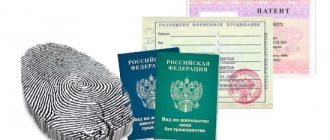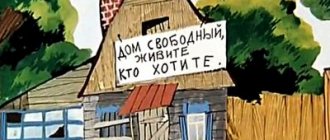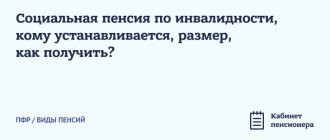- home
- Reference
- Funded pension
As a result of the large-scale pension reform that took place in our country in 2002, the concept of the funded part of the pension was introduced. Thus, all citizens who were born in 1967 and later could independently decide how to determine savings for their future pension - transfer funds in full to the insurance part or create a funded one together with the insurance one.
During this time, millions of Russian citizens of working age entered into agreements with dozens of non-state pension funds in hopes of receiving a decent pension in the future. However, in 2014, the state decides to ban contributions to the funded part , the consequences of which are unclear for citizens and therefore, among other things, will be discussed further in this article.
What is freezing the funded portion of a pension?
To answer the question of what freezing a funded pension means, you must first acquire a basic understanding of how pensions are accumulated in accounts in the Pension Fund, which are registered for each citizen.
So, in accordance with the law, for each citizen engaged in labor activity, his employer contributes a certain amount of money, the so-called insurance contributions. Their size is individual for each employee, since it directly depends on the size of the official salary, amounting to 22% of it.
Reference! Persons who are registered in accordance with the law as individual entrepreneurs or are notaries or privately practicing lawyers are required to make contributions to the state pension fund independently.
If the employee decides that, in addition to the insurance, he also wants to form a funded part of the pension, then these contributions are distributed as follows: 16% for the insurance and 6% for the funded one.
Freezing the funded part means that temporarily all contributions are sent directly to the state pension fund. In other words, the money goes towards creating only an insurance pension.
Where to look for funds?
If a citizen does not have information about the place of storage of accumulated savings, then it is proposed to visit the Pension Fund or the Multifunctional Center, and also request information about the account status via the Internet using the official website of the State Services.
The savings portion can be stored in the following organizations.
Pension Fund
Finding funds in the represented government organization is typical for citizens who have never transferred savings to other companies. The turnover of funds is handled by Vnesheconombank, the income of which will be used as investments for citizens.
NPF
In the case of non-state pension companies, the profitability, and accordingly the amount of payments, turns out to be higher in comparison with the Pension Fund of the Russian Federation by an average of 3%.
What the law says
Issues that are directly related to the formation of pension savings and, accordingly, to the freezing of the funded portion are subject to strict legal regulation.
Thus, this moratorium was introduced by Federal Law of December 4, 2013 No. 351-FZ . It was then assumed that this measure would be temporary, transitory in nature, and therefore the ban was extended only for one year. However, subsequently, by separate federal laws, the moratorium on the deduction of funds for the funded part of the pension was repeatedly extended annually.
At the end of 2021, Federal Law No. 462-FZ of December 11, 2018 came into force, according to the provisions of which the ban in question was extended until 2021, inclusive.
Attention! There is reason to believe that this ban will be extended beyond 2021, since, for example, representatives of the Ministry of Finance at the official level declare the need to extend this period until 2022.
About other conditions
Moreover, it is important not only to work the required number of years, but also to accumulate a certain number of points. They are calculated depending on the amount of payments that the citizen transfers to the Pension Fund. Accordingly, to accumulate more points you need to have a stable and high salary. However, there are very few such vacancies in Russia.
The formula for calculating pensions is so complex that even impressive incomes do not guarantee a high pension and a secure old age. If only for the reason that Russian inflation can quickly depreciate ruble savings. Namely, it is in this currency that the Russian Pension Fund stores funds.
What goals does the government pursue?
The moratorium is a decision that cannot be taken positively. The losers from this are both ordinary citizens who decided to form the funded part of their pension, and non-state pension funds. Many of them, in fact, found themselves on the verge of bankruptcy as a result of this ban.
Initially, when the ban was introduced for the first time, the Government of the Russian Federation stated that the reason for this was the need to check the activities of certain non-state pension funds due to the latter’s failure to comply with a number of provisions of federal legislation.
However, many analysts believed that the real reason for making such an unpopular and painful decision was the shortage of funds from the Pension Fund. It is known that for many years the state pension fund did not have enough of its own funds to fulfill social obligations to pensioners. In this regard, funds for these purposes were sought from third-party sources. However, for demographic reasons, this deficit tended to gradually increase.
In 2014, the Russian economy entered a period of systemic crisis caused by both internal and external political reasons, the consequences of which are still felt today.
In this regard, in order to avoid the collapse of the pension system, the Government decided to temporarily stop the formation of this type of pension.
In addition, to ensure the stability of the Pension Fund, the state took the following series of unpopular measures during the same periods:
- termination of the annual indexation of pension payments to working pensioners;
- indexation of pensions for non-working pensioners in an amount significantly lower than predicted and actual inflation;
- making a decision to increase the retirement age.
Popular questions
Due to the constantly changing pension system, a large number of questions often arise.
Is it possible to transfer a pension from the Pension Fund to the Non-State Pension Fund?
It is allowed to transfer savings from state-owned companies to other pension organizations.
However, there is a peculiarity: the transfer is allowed to be made 5 years after the selected pension company. Otherwise, the investment income of the organization accumulated for the citizen will be burned.
How to receive a funded pension?
Receipt of funds from the savings component is carried out in two forms: urgent and unlimited. Urgent is divided into 2 more methods:
- All savings are paid out in one lump sum.
- A payment made monthly during a specified period of time that the retiree chooses. The condition is a period of at least 10 years.
If desired, the pensioner can choose an indefinite method of receipt in the form of a continuous payment until the death of the insured person.
Can they transfer my pension without my consent?
If we consider the number of messages received that mention the transfer of funds without notifying the citizen, then the presented situation is theoretically possible. As a rule, this type of operation is carried out under the pretext of collecting signatures, for example, for the abolition of the pension reform, indicating the information of the pension certificate, passport data. Thus, such information allows fraudsters to transfer a citizen’s funds from the state Pension Fund to non-governmental organizations.
However, there is no official confirmation of the information provided.
However, we recommend that you be vigilant and not distribute personal data to strangers.
How will the freeze affect the size of future pensions?
Undoubtedly, the fact that a moratorium has been imposed on the formation of funded pensions in the country has an extremely negative impact on the pension expectations of citizens. In this regard, many future pensioners suffered certain losses due to the fact that investment income from the management of their funds was simply lost.
The reason for this, among other things, is that many non-state pension funds, whose main activity is the accumulation of funds received from insurance premiums and investing them in profitable projects, have simply declared themselves bankrupt.
Experts note that this moratorium has even greater and longer-term consequences . Thus, it was determined that NPFs almost completely stopped investment activities, which contributed to the slowdown in economic growth in the country as a whole.
Many citizens who have agreements with non-state pension funds are concerned about the future of the current funded pension model. It is still difficult to answer, but the Ministry of Finance of the Russian Federation is already developing changes.
Thus, according to the projects proposed for consideration by the Government, the funded pension will continue to exist, but this will happen within the framework of the formation of the so-called individual pension capital (IPC).
Important! This term should not be confused with the individual pension coefficient (also IPC), which is used to calculate the insurance pension and expresses the volume of accumulated pension rights.
It is assumed that citizens interested in the formation of this type of pension savings will be required to independently pay funds to the non-state pension fund of their choice. The same 22% of the salary that the employer contributes to compulsory pension insurance will go entirely to the insurance part or, simply put, will be used to fulfill the current obligations of the pension fund.
The moratorium discussed in this article was first introduced in 2014 against the background of a significant deterioration in the state of the Russian economy and in order to prevent the collapse of the pension system due to the growing deficit of the Pension Fund. Despite the fact that in 2016 the main difficulties were overcome, the moratorium was extended until 2021, and later until 2021 inclusive. At the moment, there is no reason to believe that the Government and the Pension Fund will return to the pre-crisis model of forming pension savings.
Why was the moratorium introduced?
Due to the fact that the funded part of the pension is frozen, the income of the future pensioner decreases. Investing in a non-state pension fund allows you to increase the amount of contributions up to 100%. In this case, the person does not incur financial losses and will not be required to provide additional funds. The need to pay contributions fell on the employer. The citizen only determined the future fate of the funds. The amount could be left in the Pension Fund or transferred to a non-state pension fund for further income generation and increasing the size of the funded part of the pension.
Important! The introduction of a moratorium has led to the fact that a citizen cannot exercise the right to choose a future pension. If a person decides to apply to a non-state pension fund, he must put up with new legislation, which has led to restrictions on the formation of savings. All contributions from depositors are forcibly redirected to the insurance part.
The freezing of the funded part of the pension occurred due to problems of the state. The responsibilities of the Pension Fund include the payment of not only old-age benefits, but also the provision of social funds. As a result, the institution receives less than 1.2 trillion rubles. annually. This happened due to the fact that many Russian employers do not fulfill their duties in good faith, providing cash to citizens in envelopes and delaying the transfer of payments for pensions to the budget. The resulting shortage of funds forced the government to look for new sources of financing. Freezing the funded part of the pension made it possible to make a profit of about 500 billion rubles. This enables the fund to fulfill its obligations to citizens.
Pension system in the Russian Federation - how does it work today?
According to the current pension system, citizens of the Russian Federation contribute their earnings to two different wallets - a general one and a personal one.
There are two types of pension benefits for citizens:
- labor benefits;
- social, old age.
Social benefits are assigned to all citizens, regardless of length of service and points. The right to such benefits begins five years after the official retirement of the main part of the working population of the Russian Federation. Last year, retirement was delayed by 5 years, citing the fact that fellow citizens began to live longer and there was not enough maintenance for everyone.
The labor pension is formed from:
- Insurance or “Common Wallet” are deductions from the earnings of working Russians to the Pension Fund of the Russian Federation, which are used for current payments to current pensioners. Insurance payments are formed according to the classic principle of the solidarity system, when young working citizens of the country support elderly disabled people.
- The savings part is a targeted transfer to the personal account of the future pensioner. Introduced in 2002. In 2005, the age limit for contributions was raised until 1967. Current legislation obliges Russians to deduct 6% of their salary monthly to form a personal pension capital, in addition to the insurance payment.
Funds accumulated in a personal account are paid in equal monthly installments. The size of this “supplement” is calculated based on the person’s expected survival time, which is officially established.
Pension moratorium in 2016-2022.
Decisions to extend the moratorium in 2016-2022.
for pension savings were taken by the Government against the backdrop of other measures aimed at rational spending of budget funds. These include:
- cancellation of previously existing indexations for working pensioners;
- indexing of post-employment benefits not to the inflation level, starting in 2015 (in the amount of 12.9%), but only by 4%. In August 2021, indexation was replaced with a one-time payment of 5 thousand rubles. Pensioners received this amount already in January 2021. From January 1, 2018, insurance pensions of non-working citizens were indexed by 3.7%. Social pensions in April 2021 were indexed by 4%. And in January 2021, the indexation of pensions of non-working pensioners took place again, its amount was 7%. It is planned that by 2024 the pension amount will be indexed by 35% and its average size will be 20,000 rubles;
- covering the Pension Fund budget deficit from the federal budget (which results in unplanned expenses and shortfalls in the state budget).
In 2021, the restriction on transferring money towards pension savings was extended to all funds credited to the personal accounts of citizens insured by the pension insurance system. Until the end of last year, they were used only for the formation of an insurance pension.
As for 2021, the Ministry of Finance of the Russian Federation has submitted a number of proposals to the Government for further reform of the pension system, including the formation of funded post-employment benefits. It was proposed to form savings on a conditionally voluntary basis:
- Russians would be able to independently send part of the money from their salaries to NPFs, bypassing the Pension Fund,
- money transferred by employers in the form of pension contributions would be directed exclusively to the Pension Fund budget. To a personal account in the Pension Fund. It was assumed that future pensioners would be able to regulate the amount of contributions independently.
But, judging by the latest disappointing trends, savings will continue to be “frozen” until the Government finds other methods of forming and reducing unnecessary costs of the state budget. Therefore, in 2021, this category of benefits still remained frozen.
Important. Back in 2021, the Pension Fund adopted a budget taking into account the freezing (moratorium) of post-employment benefits for 3 years, and therefore the funded pension in 2017-2019. was not formed.
Since January 2021, a new pension reform has started in Russia; it provides for increasing the retirement age of citizens. Against the backdrop of the reform, the pension moratorium was extended again. Moreover, it became clear that its abolition is not planned at all, since the development of an individual pension capital system has begun. Such a system will replace the funded pension. It involves the introduction of individual personal accounts, where the future pensioner will voluntarily transfer contributions.
Will the moratorium affect the amount of future pensions?
The repeatedly introduced and extended moratorium could not but affect the volume of subsequent post-employment benefits.
This is expressed as follows:
- before the “freezing” of this kind of benefits, the money of future pensioners could be placed through non-state pension funds and management companies on the financial markets, that is, they could be invested in various projects,
- the level of profitability of investments depends on many factors, not the least of which is the professionalism of the NPF staff,
- after the introduction of the moratorium and the transfer of accumulated funds to the Pension Fund budget, the return on deposits is close to zero (the official return on VEB deposits is 3%), and if we take into account the significant indicators of inflationary processes in the Russian economy, it may become negative.










